

Severine von Tscharner Fleming ’04 is in the middle of another one of her jam-packed days, and this time it’s literal: stooped over the kitchen sink in Essex, N.Y., she grins and holds out two big buckets of rose hips that she’s about to clean, cube and slow-cook into a marmalade-like jam.
“I love the little pricklies,” she gushes, as she cradles the harsh fuzz of the fruit with her fingertips. She recalls how as a kid she spent summers at her grandmother’s farm in Switzerland, where she climbed trees, milked cows and first fell in love with farm life. Now planted in the rural northern reaches of New York State, she still seems to be in the honeymoon phase when it comes to agriculture, although she has farmed for eight seasons now.
Fleming is drawn to farming’s “alluring mix of sensuality and politics,” which is partly why she’s so concerned about its future. In the last century, the proportion of farmers in the U.S. workforce shrunk from nearly half to less than 2 percent, and the rise of Big Agriculture has come at a cost. “Industrialization, specialization and concentration,” says Fleming, “have created a system which is brittle, highly energy-addicted and whose practices erode the future carrying capacity of the soil.”
Discomforting trends like these have inspired Fleming and others to try to spark a revolution in a farming industry that’s fraying and graying. Through her leadership in groups such as Farm Hack, Agrarian Trust and the National Young Farmers’ Coalition, she has become in many ways the face of a movement of young people who are ready to get their hands dirty. The idea, simply put, is to create a national patchwork of upstart farmers who will grow food to be sold close to market and serve as stewards of the dwindling supply of irrigable farmland.
“We have to catalyze, crystallize and publicize to get folks involved,” Fleming says. “The odds are stacked against us, but at the same time, there’s progress,” says Fleming. “People are stepping up and showing up.”
It’s not just a smattering of urban gardeners and hippies who are concerned. U.S. Agriculture Secretary Tom Vilsack set a goal of creating 100,000 new farmers in the next few years. Congress launched the National Institute of Food and Agriculture to speed up the pace of scientific discovery in the field. And authors like Michael Pollan have advocated expanding training programs for U.S. farmers—“not as a matter of nostalgia for the agrarian past,” as he wrote in a 2008 New York Times op-ed, “but as a matter of national security.”
Hope may lie with Fleming’s fellow Millennials—though your typical farmer these days skews more AARP than Generation Y. According to the USDA’s 2007 agricultural census, since 1978 the average age in the profession has increased seven years, from 50 to 57. Farmers who are 65 and older outnumber those 35 and younger by a factor of six to one.
The aging in agriculture wasn’t entirely unexpected. A whole generation essentially opted out of the industry as a result of the ’80s farm crisis, when the U.S. lost approximately 300,000 farms due to high interest rates and an unfavorable economic climate. “Those kids [growing up then] looked at their parents’ lives and the stress of expensive land and mountains of debt,” Fleming says, “and they simply weren’t inspired to jump in … for good reason.”
She is cautiously optimistic that the tide may be turning, expecting that the number of young farmers will be on the rise when new figures are released next year. Fleming says that her generation is unlike any before them—an army of entrepreneurial-minded, educated, first-time farmers with a passion for local food and an eagerness to employ sustainable methods.
Rather than cultivating large acreage of a single crop in a monoculture and selling it to middlemen in the commodity market, this niche of farmers sells a wide variety of goods, often directly to the public through markets and community-supported agriculture programs. Capturing the retail price is a critical element for their success, Fleming says. In the last 15 years, revenue from this farm-to-table model has more than doubled in the U.S., and it’s what helps folks like Fleming stand out and survive in a David-and-Goliath marketplace.
“Out of both preference and necessity, we aren’t doing things like they’ve been done,” Fleming says. “We don’t buy into the idea that we have to be part of this larger machine.”
 EVEN AS SHE LEADS the movement, Fleming is not really a “farmer” in the traditional sense. She is actively engaged in the production of food, running a pickle company in the Grange Hall of her town, and making a small line of dried herbs, jellies and wildcrafted teas. But mostly she sits at the computer and talks on the phone, coordinating her grassroots media network.
EVEN AS SHE LEADS the movement, Fleming is not really a “farmer” in the traditional sense. She is actively engaged in the production of food, running a pickle company in the Grange Hall of her town, and making a small line of dried herbs, jellies and wildcrafted teas. But mostly she sits at the computer and talks on the phone, coordinating her grassroots media network.
She hosts a weekly podcast, manages several blogs, and lives in a house bordering Lake Champlain with a vegetable garden and lightning-fast Wi-Fi.
In the last six years, the self-described “punky grassroots farming ninja” has visited 44 states, organizing film screenings, moderating panels and speaking at conferences.
“My mix of farming and activism has been an ever-shifting vinaigrette, and right now I think the best use of my time is being an advocate for the larger cause,” she says. “I don’t mean to shoot holes in your American Gothic storyline, but I don’t live on a farm with pigs and a pitchfork.”
Although, she adds, “last year’s pigs are here, on the porch in the freezer.”
A lanky, frizzy-haired ball of energy who laughs easily, smiles widely and favors flannel, Fleming is constantly in motion and talking effusively about her latest projects, whether that’s a Kickstarter-funded sail freight project that ships pickled goods to yuppies in New York City or an agrarian-themed singles’ mixer dubbed “Weed Dating.”
These days, most of her attention is devoted to the Greenhorns, a 13,000-strong organization she founded that’s aimed at recruiting, promoting and supporting young farmers. The mixers, bonfires and festivals Fleming helps coordinate bring together what she calls the “young farmer tribe.” Add to that almost 30 events for Farm Hack, an initiative that connects engineers and farmers to design open-source farm technologies.
Among her latest Greenhorns activities, she recently finished editing The New Farmers’ Almanac, a sprawling compendium of essays, illustrations and advice from more than 120 contributors. And in January she launched Agrarian Trust, an advocacy project hosted by the Schumacher Center for New Economics, focused on the issue of land access, providing farmers with legal templates and case models.
“She has an infectious enthusiasm and an uncompromising vision where she’ll just move forward on all these projects and expect you to keep up,” says Dorn Cox, board president of Farm Hack. “As long as I’ve known her, she’s always juggled many things at once and done whatever it takes—delegates, cajoles, prods —to make them happen.”
FLEMING AND I ARE standing in a field in Keeseville, N.Y, surrounded by more than 600 revelers that span farmgirls in overalls, hippies with tie-dyed shirts and hipsters without any shirts at all. We are at the fourth-annual Crowfest, a celebration of local agriculture that this year also marks the unofficial debut of her other other venture, Grange Copackers Co-Op, which produces non-perishables ranging from hot sauce to sauerkraut.
Stationed at her stand with a blue sign hand-painted by her brother, Reynolds “Charlie” Fleming PI ’13, Severine is passing out samples of pickled veggies, making small talk and refusing payment: thanks to the tightly-regulated bureaucracy of New York agricultural law, her new business is currently prohibited from accepting money for goods. “Today’s just about meeting strangers and getting our name out,” she says.
Nearby Lucas Christenson, owner of the Fledging Crow Farm that hosts this festival, soaks in the scene and marvels at the fact that only five years ago he was living here in a tent without power or running water.
“There’s definitely a tight-knit community of us,” he says, before motioning over to a group of young farmers congregated around a fire-pit cooking a portly grass-fed pig. “We’re all friends, and we want to do more to cooperate and collaborate.”
Given their busy schedules, that’s not always an easy task, but Fleming views these events as essential for establishing a support system for young farmers.
“The first few years can be so challenging. Many of us feel socially isolated and are struggling to make ends meet,” she says. “It’s important to provide a space where people can go and see that there are others ‘like me’ and support one another.”
FLEMING EMBARKED on one of her earliest community-building initiatives her first year at Pomona, when she led a team of guerrilla gardeners to start the Organic Farm—a project initially marked by wrangling with college officials, but which is now formally included in Pomona’s curriculum. A third-generation Sagehen, Severine is the daughter of noted urban planner and preservation advocate Ronald Lee Fleming ’63.
After two years in Claremont, she took a leave of absence and bought a round-the-world plane ticket to apprentice on farms across the globe, from Australia to South Africa to Scotland. Those experiences made her increasingly aware of—and outraged by—the practices of Big Agriculture, inspiring her to transfer to UC Berkeley, where she graduated with a B.S. in conservation and agro-ecology.
Her real education, however, came from organizing outside the classroom: lectures, workshops and film festivals, which left her struck by “all the dismal horror movies about hunger and soil erosion.” That’s when she decided to focus on solutions.
After graduation, she spent nearly three years traveling the States interviewing young farmers for a more “glass half-full” documentary that became Greenhorns, which has been screened at more than 1,300 schools, conferences and colleges worldwide.
The film was the catalyst that spurred Fleming’s earliest forays in activism, including stints working with the National Sustainable Agriculture Coalition to lobby for young farmerfriendly legislation in Washington, D.C. She soon realized through Greenhorns —and the organization of the same name that it spawned—that she could create change by telling stories and connecting people, rather than by having to “put on nice clothes and fly down to the Capitol all the time.”
FAR FROM D.C., as we speed through the winding country roads of rural New York on the way to Crowfest, Fleming points out several abandoned properties along the route, including a dramatically dilapidated barn with a roof that’s completely caved in. “This is what happens when people give up on farming,” she says.
She got her first reality check of this sort right after Berkeley, when she would cruise around Hudson Valley searching for affordable farmland and see unused spaces like these in every town.
“There are very few policy structures to support these places being properly farmed,” she says, “and that needs to change.”A report Fleming co-led through the National Young Farmers Coalition found that the biggest obstacles for aspiring farmers are a lack of access to land, capital and credit. One reason for this is corporate consolidation, spurred by 20th-century technology that has allowed farm operators to harvest more crops on larger amounts of land using fewer people. The growth of these “McFarms” has made it harder than ever for younger farmers to purchase land.
At the same time, farm values have doubled since 2000—good news for existing landowners who need to cash out their land in order to retire, but not for those just starting out. It’s telling that Fleming, a major land access advocate who has farmed for nearly a decade, doesn’t even own her own property in Essex.
“Farmland is becoming an investment asset, where it’s more expensive than is justified by what it can produce,” she says, her voice rising. “It’s no longer about managing a diverse set of crops to support your family.”
Fleming’s anger is understandable, and she notes that her critique is shared by many. Partisan bickering in Congress has repeatedly resulted in watered-down farm bills, and it can be easy to lose hope when so many other issues seem to be capturing the country’s attention (and tax dollars).
But ultimately, she’s hopeful. Initiatives like the USDA’s Beginning Farmer and Rancher Development Program have established government loans to help new farmers buy land. And, in a larger sense, these organizations’ success with community-building has affirmed Fleming’s belief in the importance of cultivating the “culture” part of “agriculture.”
“In the next 20 years, the amount of land predicted to change hands is 400 million acres, which is roughly the size of the Louisiana Purchase,” she says. “We have an exciting opportunity to change how that land will be managed, but we don’t have much time to do it. We’ve got to get people on board.”
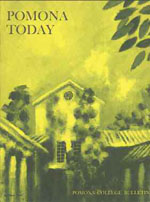 The pages of the first issue are laden with an early-’60s sense of purpose: men in suits and ties assembled around a cyclotron, a professor exploring the “Frontiers of Science,” a photo showing light—and, no doubt, knowledge—aglow through the glass doors of the newly-built Seaver Laboratory. A Space Age feeling pervades: All that’s missing is a make-your- own Gemini capsule cutout.
The pages of the first issue are laden with an early-’60s sense of purpose: men in suits and ties assembled around a cyclotron, a professor exploring the “Frontiers of Science,” a photo showing light—and, no doubt, knowledge—aglow through the glass doors of the newly-built Seaver Laboratory. A Space Age feeling pervades: All that’s missing is a make-your- own Gemini capsule cutout.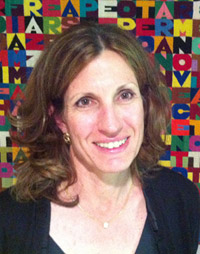 Janet Inskeep Benton ’79 received her M.B.A. from Harvard Business School before working in product management in the beverage division at General Foods Corp. from 1984-88 and then staying home and raising her children.
Janet Inskeep Benton ’79 received her M.B.A. from Harvard Business School before working in product management in the beverage division at General Foods Corp. from 1984-88 and then staying home and raising her children. Stephen Loeb ’79 P’09, P’13 joined Alaska Distributors Co., an asset management company—formerly a wholesale distributor and broker of wine, beer, spirits and non-alcohol beverages—in 1984 and has served as the president since 1998 and CEO since 2003. Prior to that, he was a corporate banking officer and then assistant vice president with Wells Fargo and Co. An economics major at Pomona, Loeb went on to earn his M.B.A. from Northwestern University’s Kellogg School of Management and was a finalist for the Ernst & Young Entrepreneur of the Year in 2003 and 2004.
Stephen Loeb ’79 P’09, P’13 joined Alaska Distributors Co., an asset management company—formerly a wholesale distributor and broker of wine, beer, spirits and non-alcohol beverages—in 1984 and has served as the president since 1998 and CEO since 2003. Prior to that, he was a corporate banking officer and then assistant vice president with Wells Fargo and Co. An economics major at Pomona, Loeb went on to earn his M.B.A. from Northwestern University’s Kellogg School of Management and was a finalist for the Ernst & Young Entrepreneur of the Year in 2003 and 2004. Peter Sasaki ’91 is a managing member of CGS Associate, LLC, a New York City-based boutique financial consulting and research firm, and a shareholder and investor at Centara Capital Group Inc., a financial services firm in San Diego, where he manages capital markets and structuring for a real estate derivatives business and advises private wealth management programs. Previously, he was founder, managing member and CIO at Logos Capital Management, LLC; a market analyst and derivative-trading specialist with Moore Capital Management Inc., a propriety trader with J.P. Morgan & Co.; and founder of Sasaki Group Ltd., an investment partnership specializing in leveraged equity, foreign exchange and interest rate speculation. Sasaki was a philosophy major at Pomona and has an M.B.A. from the Leonard N. Stern School of Business at New York University. He serves on the Head of School’s Advisory Council at the Hopkins School in New Haven, Conn., and is an instrument-rated private airplane pilot.
Peter Sasaki ’91 is a managing member of CGS Associate, LLC, a New York City-based boutique financial consulting and research firm, and a shareholder and investor at Centara Capital Group Inc., a financial services firm in San Diego, where he manages capital markets and structuring for a real estate derivatives business and advises private wealth management programs. Previously, he was founder, managing member and CIO at Logos Capital Management, LLC; a market analyst and derivative-trading specialist with Moore Capital Management Inc., a propriety trader with J.P. Morgan & Co.; and founder of Sasaki Group Ltd., an investment partnership specializing in leveraged equity, foreign exchange and interest rate speculation. Sasaki was a philosophy major at Pomona and has an M.B.A. from the Leonard N. Stern School of Business at New York University. He serves on the Head of School’s Advisory Council at the Hopkins School in New Haven, Conn., and is an instrument-rated private airplane pilot.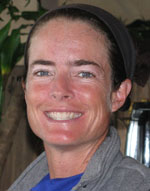 Brenda Peirce Barnett ’92
Brenda Peirce Barnett ’92 Paul Farmer ’92
Paul Farmer ’92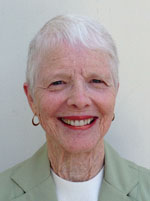 Peggy Schuler Olson ’61
Peggy Schuler Olson ’61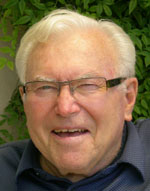 Bruce Prestwich ’55
Bruce Prestwich ’55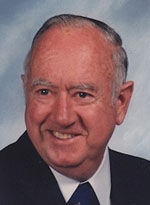 Roger Reinke ’51
Roger Reinke ’51
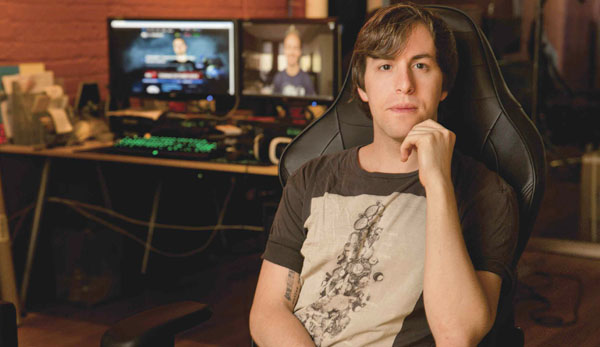
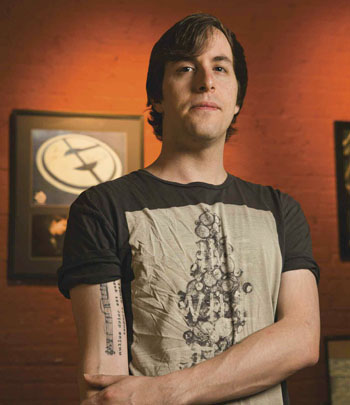 GARFIELD IS AN ACCIDENTAL ENTREPRENEUR. Growing up in suburban Philadelphia, he trained as a classical violinist and was a huge fan of traditional professional sports. Garfield’s slight build limited him to racquet sports, but a video game called Counter-Strike became his competitive outlet. He fell into the role of impresario as a student at Pomona College, when a team of five Canadian friends wanted to go to Dallas for a tournament in 2005 but didn’t have the money. Garfield borrowed $1,000 from his mother to front them, the team finished second and he was on his way. Soon, he was courting sponsors and traveling to tournaments in Italy and Singapore.
GARFIELD IS AN ACCIDENTAL ENTREPRENEUR. Growing up in suburban Philadelphia, he trained as a classical violinist and was a huge fan of traditional professional sports. Garfield’s slight build limited him to racquet sports, but a video game called Counter-Strike became his competitive outlet. He fell into the role of impresario as a student at Pomona College, when a team of five Canadian friends wanted to go to Dallas for a tournament in 2005 but didn’t have the money. Garfield borrowed $1,000 from his mother to front them, the team finished second and he was on his way. Soon, he was courting sponsors and traveling to tournaments in Italy and Singapore.

 EVEN AS SHE LEADS the movement, Fleming is not really a “farmer” in the traditional sense. She is actively engaged in the production of food, running a pickle company in the Grange Hall of her town, and making a small line of dried herbs, jellies and wildcrafted teas. But mostly she sits at the computer and talks on the phone, coordinating her grassroots media network.
EVEN AS SHE LEADS the movement, Fleming is not really a “farmer” in the traditional sense. She is actively engaged in the production of food, running a pickle company in the Grange Hall of her town, and making a small line of dried herbs, jellies and wildcrafted teas. But mostly she sits at the computer and talks on the phone, coordinating her grassroots media network.

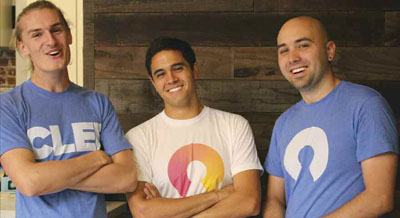




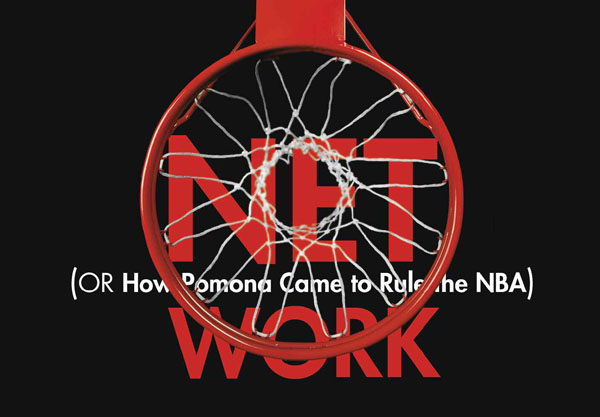
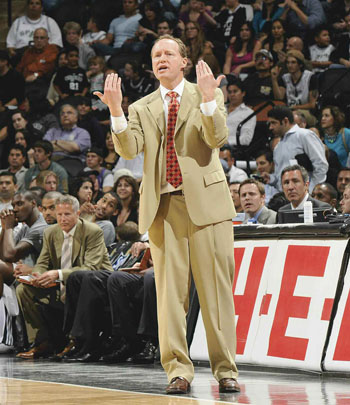 FIRST, SOME BACKGROUND. As it turns out, I have an unusual perspective on all this. In the fall of 1992, I transferred into Pomona as a sophomore, hoping to play on the basketball team while preparing for a career in journalism. Mike was one of the first players I met. He made quite an impression. One memory stands out: an informal pickup hoops game at Rains Center, early that fall. Most of the team was there.
FIRST, SOME BACKGROUND. As it turns out, I have an unusual perspective on all this. In the fall of 1992, I transferred into Pomona as a sophomore, hoping to play on the basketball team while preparing for a career in journalism. Mike was one of the first players I met. He made quite an impression. One memory stands out: an informal pickup hoops game at Rains Center, early that fall. Most of the team was there. OF THE THREE, Popovich’s NBA ascent occurred first. His story is also the best-known. At Pomona, he turned around the Sagehen program, taking a team that was 2-22 in his first season and, within six years, leading it to a SCIAC title and a NCAA Division III Tournament berth. After spending a year as a volunteer assistant to Larry Brown at Kansas, he rejoined Brown with the Spurs, as an assistant. After a stint with the Golden State Warriors, he ended up back in San Antonio, and eventually became the general manager. In 1996, he named himself head coach. It’s a title he’s held ever since.
OF THE THREE, Popovich’s NBA ascent occurred first. His story is also the best-known. At Pomona, he turned around the Sagehen program, taking a team that was 2-22 in his first season and, within six years, leading it to a SCIAC title and a NCAA Division III Tournament berth. After spending a year as a volunteer assistant to Larry Brown at Kansas, he rejoined Brown with the Spurs, as an assistant. After a stint with the Golden State Warriors, he ended up back in San Antonio, and eventually became the general manager. In 1996, he named himself head coach. It’s a title he’s held ever since.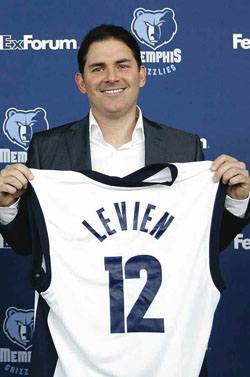 So far, Jason says he’s enjoying the job. He keeps tabs on Budenholzer, whom he remembers as “the best competitor on the team” at Pomona, and still occasionally employs maxims he learned from Katsiaficas, including “be quick but don’t hurry.” “To me, Pop’s success made the NBA world seem more accessible and smaller,” he says of the Pomona connection. “And the time I spent on the team, I tried to learn as much as I could about the game. I really tried to suck it all in, because I knew Kat got much of his stuff from Pop.”
So far, Jason says he’s enjoying the job. He keeps tabs on Budenholzer, whom he remembers as “the best competitor on the team” at Pomona, and still occasionally employs maxims he learned from Katsiaficas, including “be quick but don’t hurry.” “To me, Pop’s success made the NBA world seem more accessible and smaller,” he says of the Pomona connection. “And the time I spent on the team, I tried to learn as much as I could about the game. I really tried to suck it all in, because I knew Kat got much of his stuff from Pop.”
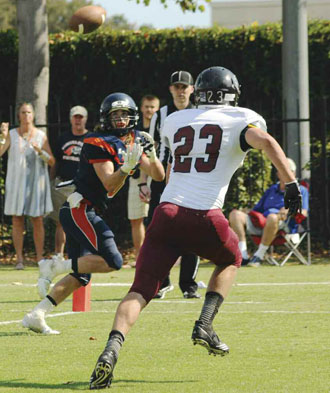 A year ago, with the offense struggling to find weapons due to injuries, he became a two-way player in the second half of the season, playing wide receiver and defensive back three times in the same game. He also moved up to linebacker for a half when injuries hit there as well.
A year ago, with the offense struggling to find weapons due to injuries, he became a two-way player in the second half of the season, playing wide receiver and defensive back three times in the same game. He also moved up to linebacker for a half when injuries hit there as well.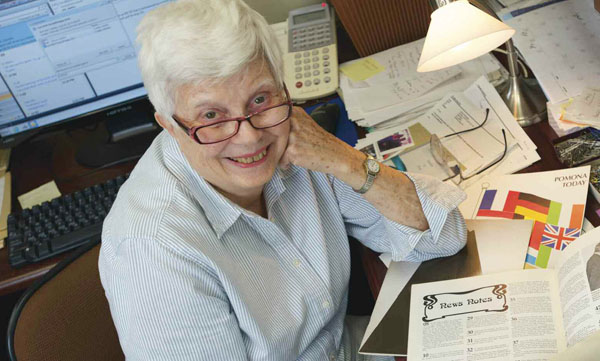

 The hook, almost predictably, was that after launching a community awareness project detailing how palm oil can contribute to deforestation, destruction of orangutans’ habitat, global warming and human rights abuses, Vorva and partner Rhiannon Tomtishen, a former classmate who will attend Stanford next year, discovered they had been peddling the stuff door-to-door.
The hook, almost predictably, was that after launching a community awareness project detailing how palm oil can contribute to deforestation, destruction of orangutans’ habitat, global warming and human rights abuses, Vorva and partner Rhiannon Tomtishen, a former classmate who will attend Stanford next year, discovered they had been peddling the stuff door-to-door.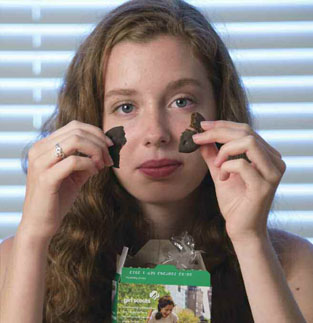 Her accomplishments earned her less interest from Ivy League schools than one might expect—Vorva says she couldn’t afford to take a test-preparation class and didn’t do as well on the SAT as she might have hoped—but she learned about Pomona when she used the college search tool on the website of the College Board, administrator of the SAT. “Pomona was the only one that came up. And I was like, oh, that’s kind of terrifying,” Vorva says. “So I’d never even heard the name before and it introduced me to this small liberal arts school.”
Her accomplishments earned her less interest from Ivy League schools than one might expect—Vorva says she couldn’t afford to take a test-preparation class and didn’t do as well on the SAT as she might have hoped—but she learned about Pomona when she used the college search tool on the website of the College Board, administrator of the SAT. “Pomona was the only one that came up. And I was like, oh, that’s kind of terrifying,” Vorva says. “So I’d never even heard the name before and it introduced me to this small liberal arts school.”